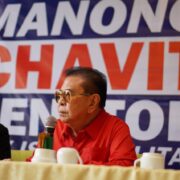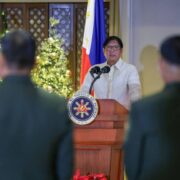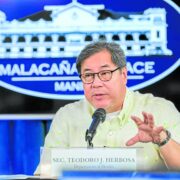Of boardroom coup d’etat and Islamic history debate

Long before the Spaniards came to this archipelago and brought Christianity with them, Islam had been the dominant religion of indigenous Filipinos.
But when exactly did Islam reach our shores?
President Marcos issued on Nov. 7 last year an administrative order (AO) constituting a steering committee for the commemoration of the 650th anniversary of Philippine Muslim history and heritage in 2030. However, we hear there’s an internal debate raging within the bureaucracy—and even among authorities on history—on the accuracy of this milestone.Citing scholars of Philippine Muslim history, Mr. Marcos’ AO reckoned that the Islamic faith in the Philippines had taken root between 1350 and 1380, making Islam the oldest monotheistic religion in this part of the world.
The National Historical Institute, the predecessor of the National Historical Commission of the Philippines (NHCP), accepted this milestone. A historical marker was even installed last year at the Makhdum Mosque in Tawi-Tawi, said to be the first Islamic place of worship in the country.But now, NHCP board members are questioning the factual basis of the 1380 reckoning date even as many other government agencies have already started preparing for the 650th anniversary.
On the heels of the debate comes a recent boardroom coup d’etat at the NHCP.
Seven out of nine members had voted to oust the chair, Emmanuel Calairo, incidentally the only one who supports the 650th year Islamic milestone. The rest have apparently written to the president to oppose the milestone celebration.
But another source said the debate on the history of Islamic arrival was just one of the many issues that have caused the board upheaval at the NHCP. Apparently, it’s just the tip of the iceberg.
In the meantime, the NHCP has announced its new chair, Lisa Guerrero Nakpil, who will have no choice but to wade into the debate. — Doris Dumlao-Abadilla
DA forms dream teams
The Department of Agriculture (DA) has formed three different teams aimed at bolstering local food production and reducing postharvest losses.
The teams, to be led by Agriculture Undersecretary Jerome Oliveros, are tasked to prepare and finalize the feasibility studies of priority infrastructure projects focusing on rice and corn, among the staple Filipino foods.
They are responsible for crafting the framework and plans for the proposed postharvest program for rice and corn, solar-powered cold storage facilities and proposed solar-powered irrigation systems.
Projects to be conceptualized by these groups must comply with the requirements of the DA’s clearinghouse system and the National Economic and Development Authority’s Investment Coordination Committee.
Earlier, Agriculture Secretary Francisco Tiu Laurel Jr. said the government would need to earmark around P93 billion in the next couple of years to build postharvest facilities for rice and corn and another P1 billion to build cold storage facilities to extend vegetables’ shelf life.
Since assuming the highest DA post in November last year, Tiu Laurel has consistently said that he wants to lessen the country’s dependence on imports and scale up domestic food output.
Well, for one, the country breached its previous record of palay production when the volume totaled 20.06 million metric tons (MT) in 2023, up from the previous record of 19.96 million MT in 2021, according to the Philippine Statistics Authority.
The question is… will the Marcos administration achieve its promise of food self-sufficiency and increase the country’s reliability on local rice production by the end of his term in 2028?
Abangan! — Jordeene B. Lagare

















